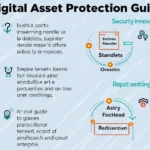Introduction
In the rapidly evolving world of cryptocurrency, the energy consumption of Bitcoin mining has emerged as a major topic of discussion. With estimates suggesting that Bitcoin mining consumed approximately 80 TWh of electricity in 2023, concerns about its environmental impact have led many to reevaluate the energy sources utilized in this process. This article aims to provide an insightful overview of Bitcoin mining energy sources, focusing on renewable solutions and their implications for sustainability.
Understanding Bitcoin Mining
Before delving into energy sources, it’s essential to understand what Bitcoin mining entails. Bitcoin mining is the process of validating transactions and adding them to the blockchain ledger. Miners utilize powerful computers to solve complex mathematical problems, which require substantial energy resources. The competition among miners often leads to a race for the most efficient and cost-effective energy sources.
The Energy Demand of Mining
- High Energy Consumption: Each Bitcoin transaction can consume over 1000 kWh of electricity.
- Geographic Variability: Mining energy consumption varies significantly by location, largely due to access to cheap electricity.
- Environmental Impact: Conventional mining practices have faced criticism for their carbon footprint.
Renewable Energy Sources in Bitcoin Mining
Transitioning to renewable energy is not just an environmental imperative; it’s increasingly becoming a business necessity for miners looking to reduce costs.

Hydropower
Hydropower remains one of the most prominent renewable sources for Bitcoin mining. Countries like China and Iceland have leveraged their vast rivers and geothermal activity to produce inexpensive electricity.
- Cost-Effective: Hydropower costs can be as low as $0.01 per kWh, making it a favorite among miners.
- Low Carbon Footprint: Utilizing hydropower significantly reduces greenhouse gas emissions compared to fossil fuels.
Solar Energy
Solar energy is gaining traction as the technology matures and becomes more affordable. Miners are increasingly investing in solar farms to power their operations.
- Initial Investment: While the setup cost can be high, ongoing energy expenses are drastically lower.
- Decentralization Advantage: Solar panels can be set up in remote locations, allowing miners to bypass grid dependency.
Wind Energy
Wind energy, like solar, is a viable renewable source that can supply substantial power to mining operations. Regions with steady wind patterns, such as Texas, are capitalizing on this energy form.
- Economic Viability: The cost of wind energy has plummeted over the past decade, competing directly with fossil fuels.
- Scalability: Wind farms can be expanded based on local energy demands, making them adaptable to miner requirements.
Geothermal Energy and Its Advantages
Geothermal energy is another renewable source that presents unique benefits for Bitcoin miners, especially in regions with geothermal resources.
- Constant Energy Supply: Unlike solar and wind, geothermal energy provides a stable, uninterrupted energy source.
- Low Land Use: Geothermal plants require less land compared to other renewable energy infrastructures, minimizing environmental disruption.
Bitcoin Mining in Vietnam: Growth and Opportunities
As the global cryptocurrency market flourishes, Vietnam’s Bitcoin mining scene is on the rise. According to recent data, Vietnam’s crypto user growth rate has surged by over 200% in the past year, reflecting increasing interest in mining as a profitable venture.
Local Energy Sources
In Vietnam, the ability to harness a mix of hydro and solar energy sources provides a significant opportunity for miners looking to operate sustainably.
- Hydropower Potential: Vietnam has numerous rivers and dams that can support large-scale mining operations.
- Government Support: The Vietnamese government has shown interest in promoting renewable energy, offering investments and incentives.
Challenges and Considerations
Despite the growing adoption of renewable energy in Bitcoin mining, several challenges remain:
- Infrastructure Costs: Initial setup of renewable energy systems can be cost-prohibitive.
- Seasonal Variability: Dependence on water flow and sunlight can impact energy availability.
- Technological Advancements: Emerging technologies may disrupt existing energy strategies, necessitating constant monitoring and adaptation.
Conclusion
The future of Bitcoin mining energy sources lies in the balance of innovation, sustainability, and efficiency. With ongoing advancements in technology and a collective push towards greener energy sources, the landscape of Bitcoin mining is evolving. As miners and policymakers continue to collaborate, transitioning to more sustainable practices can pave the way for a more resilient and environmentally-friendly cryptocurrency ecosystem.
By prioritizing renewable energy sources, the Bitcoin mining community can diminish its environmental impact while also setting a standard that resonates with a growing number of eco-conscious investors. Looking ahead, integrating these energy innovations will not only benefit miners but also the broader goal of global sustainability.
For more insights on cryptocurrency and blockchain technology, visit officialcryptonews.




